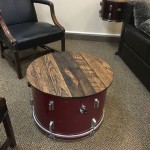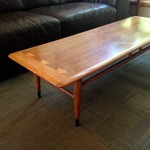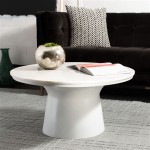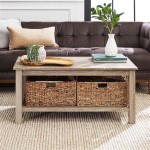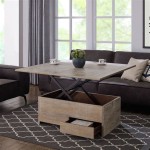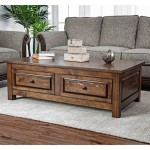Wedding Table Set Up Plan: A Comprehensive Guide
The wedding table set up plan is a critical element in creating the desired ambiance and ensuring a smooth and enjoyable dining experience for guests. Meticulous planning and execution are essential to achieving a visually appealing and functional table setting that complements the overall wedding theme and reflects the couple's personal style. This article provides a comprehensive guide to the various aspects involved in planning and executing a flawless wedding table set up.
Understanding the Scope of the Table Set Up Plan
Before diving into the specifics, a clear understanding of the scope of the table set up plan is necessary. This involves considering several factors, including the venue layout, the number of guests, the wedding style (formal, informal, rustic, modern, etc.), the budget, and any specific cultural or religious requirements. The table set up plan isn't merely about placing items on a table; it's a strategic design that considers aesthetics, functionality, and guest comfort.
The first step is to gain a thorough understanding of the venue. This includes knowing the table dimensions, available space between tables, and the overall lighting conditions. This information will influence the choice of linens, centerpieces, and the overall table arrangement. Consider the accessibility of the tables for guests with mobility issues and ensure sufficient space for servers to move around comfortably.
The number of guests directly impacts the number of tables required and the density of the seating arrangement. A seating chart should be finalized before deciding on the table layout and decor. This ensures that guests are seated comfortably and that there aren't any unforeseen disruptions due to inadequate space. Different table shapes, such as round, rectangular, or square, can be used to accommodate varying guest counts and venue layouts.
The wedding style will heavily influence the table setting choices. A formal wedding typically calls for elegant linens, fine china, crystal glassware, and sophisticated centerpieces. An informal wedding, on the other hand, might opt for simpler linens, less formal tableware, and more relaxed floral arrangements. Rustic weddings often incorporate natural elements like wood, burlap, and wildflowers, while modern weddings may feature minimalist designs and geometric shapes.
Budget constraints will play a significant role in determining the extent and complexity of the table set up. Prioritize elements that have the most impact, such as linens and centerpieces, and consider cost-effective alternatives where possible. Renting linens and tableware can often be more economical than purchasing them, especially for large weddings.
Finally, it's crucial to be aware of any cultural or religious requirements that may influence the table set up. Certain traditions may dictate specific table arrangements, seating arrangements, or the inclusion of particular items. Consulting with family members or a wedding planner who is familiar with these customs can prevent any misunderstandings or oversights.
Key Elements of a Wedding Table Setting
The wedding table setting comprises several key elements, each of which contributes to the overall aesthetic and functionality of the table. These elements include linens, tableware (including plates, cutlery, and glassware), centerpieces, place cards or escort cards, favors, and any additional decorative items.
Linens form the foundation of the table setting and significantly impact the overall look and feel. Tablecloths are typically chosen to complement the wedding colors and style. High-quality linens create a sense of luxury and sophistication, while simpler linens can be used for more casual weddings. Napkins should also coordinate with the tablecloth and can be folded in various ways to add visual interest. Consider the material of the linens and choose fabrics that are easy to clean and resistant to wrinkles.
Tableware encompasses the plates, cutlery, and glassware used for the meal. The choice of tableware depends on the formality of the wedding and the menu being served. Formal weddings often feature fine china, silverware, and crystal glassware. Informal weddings can opt for less formal tableware, such as ceramic plates, stainless steel cutlery, and standard glassware. Ensure that there is sufficient tableware for each guest to comfortably enjoy the meal and that all items are clean and in good condition.
Centerpieces are the focal point of the table setting and should be chosen to complement the wedding theme and overall decor. Floral arrangements are a popular choice, but other options include candles, lanterns, vases, and sculptural elements. The size and height of the centerpieces should be carefully considered to avoid obstructing guests' views or interfering with conversation. Ensure that the centerpieces are stable and secure to prevent them from being knocked over.
Place cards or escort cards are used to guide guests to their assigned seats. Place cards are typically placed directly on the table at each guest's place setting, while escort cards are displayed at the entrance to the reception area. The design of the place cards or escort cards should coordinate with the wedding stationery and overall theme. Consider using calligraphy or elegant fonts for a more formal look.
Wedding favors are small gifts given to guests as a token of appreciation. The favors can be placed on the table at each guest's place setting or displayed on a separate table. Choose favors that are meaningful, practical, or reflective of the couple's personality. Consider the size and weight of the favors to ensure they don't overcrowd the table setting.
Additional decorative items, such as chargers, napkin rings, and table runners, can be used to enhance the overall look of the table setting. Chargers are decorative plates placed beneath the dinner plate and add a layer of elegance to the table. Napkin rings hold the napkins in place and can be chosen to complement the other tableware. Table runners are strips of fabric that run down the center of the table and can be used to add color, texture, and visual interest.
Creating a Functional and Aesthetically Pleasing Table Layout
The layout of the table setting is crucial for both functionality and aesthetics. A well-planned layout ensures that guests can easily access their food and drinks and that the table is visually appealing. Several factors should be considered when creating the table layout, including the placement of tableware, glassware, and centerpieces, as well as the overall balance and symmetry of the table.
Proper placement of tableware is essential for ensuring a smooth dining experience. The dinner plate should be placed in the center of the place setting, with the cutlery arranged on either side in the order they will be used. Forks are typically placed on the left side of the plate, with the salad fork on the outside and the dinner fork on the inside. Knives are placed on the right side of the plate, with the blade facing inward. Spoons are placed to the right of the knives. The napkin can be placed on the plate, to the left of the forks, or in a napkin ring.
The placement of glassware is also important for both functionality and aesthetics. The water glass should be placed above the knives, and the wine glass should be placed to the right of the water glass. Additional glassware, such as champagne flutes or cocktail glasses, can be added as needed. Ensure that the glassware is clean and polished and that it is placed in a way that is easily accessible to guests.
The placement of centerpieces should be carefully considered to avoid obstructing guests' views or interfering with conversation. Centerpieces should be placed in the center of the table or arranged in a symmetrical pattern. The height of the centerpieces should be appropriate for the table size and the overall layout. Ensure that the centerpieces are stable and secure to prevent them from being knocked over.
Overall balance and symmetry are important for creating a visually appealing table setting. The table should look balanced and harmonious, with the various elements arranged in a way that is pleasing to the eye. Symmetry can be achieved by placing identical centerpieces on either side of the table or by arranging the tableware in a symmetrical pattern. Asymmetry can also be used to create visual interest, but it should be done carefully to avoid creating a cluttered or unbalanced look.
Consider the flow of traffic around the tables when planning the layout. Ensure that there is sufficient space between tables for guests to move around comfortably and for servers to access the tables. Avoid placing tables too close together, as this can create a crowded and uncomfortable atmosphere.
Finally, consider the lighting conditions when planning the table layout. Adjust the placement of the centerpieces and other decorative items to maximize the impact of the lighting. Candles and lanterns can be used to create a warm and inviting atmosphere, while spotlights can be used to highlight specific elements of the table setting.
By carefully considering these factors, a functional and aesthetically pleasing table layout can be created that enhances the overall dining experience and contributes to the success of the wedding celebration.

Rectangle Wedding Table Layout Plan Ideas For Elegant Receptions

How Do I Make A Wedding Floor Plan Elisabeth Kramer Coordinator And Consultant

120 Guest Wedding Reception Layout

Behind The Scenes Reception Layouts

Outdoor Wedding Reception Table Layout

Wedding Floor Plans Design Your Dream

30 Wedding Reception Layout Ideas Hi Miss Puff Page 7

Fairytale Wedding Reception Floor Plan
Reception Floor And Table Plan Wendell Ivy Wedding

Mastering Wedding Reception Table Layouts Lovetoknow
Related Posts

